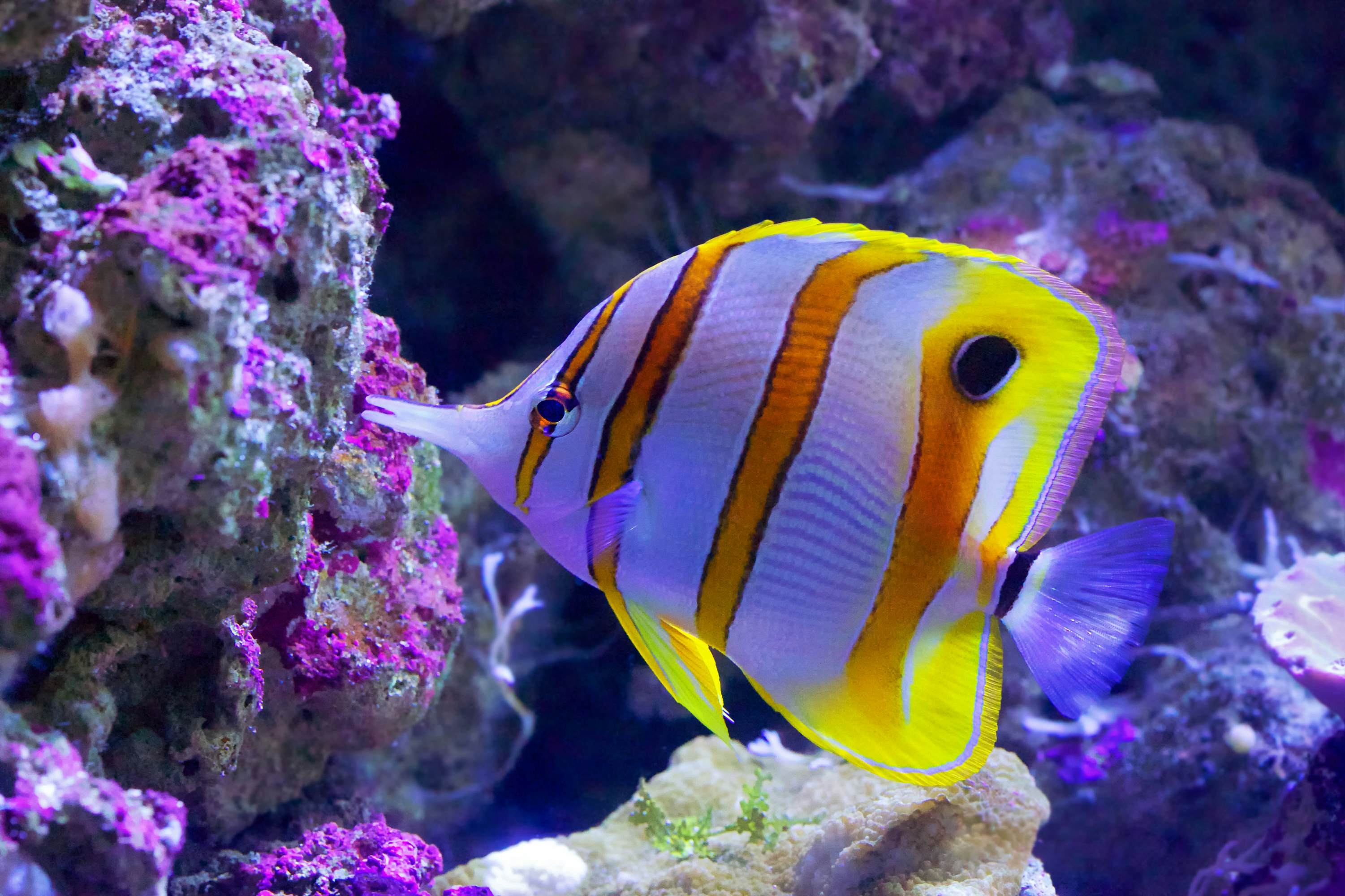

In return, the clownfish uses its bright colors to attract other fish to the anemone, which will serve as food after dying from the poison. It protects the clownfish from predators and provides it with extra food. The clownfish depends on its symbiotic relationship with the anemone for survival. Despite their great variety, sharks currently risk boat attacks and bycatch by commercial fishing vessels. The great white shark, of huge proportions, as well as the tiger shark, the gray reef shark, and the prickly shark, among others, also live in the reef. It is not uncommon to find sharks of any size from the smallest, such as Wobbegongs, to the largest, such as the Whale Shark. The Great Barrier Reef is home to over a hundred different species of sharks. Hong Kong, which has one of the highest per capita fish consumption rates in the world, considers it a delicacy. Today they are endangered due to their reputation of being delicious. Also called the king of coral reefs, the Humphead Wrasse can reach almost two meters in length, weigh up to 200 kilos and live for up to 30 years. The passive and friendly species is the largest member of the Labridae family, found in the tropical waters of nearly 50 countries. Its thick lips and characteristic bump on the head give this fish an unusual appearance. As defense against possible threats, they have a venomous stinger at the base of their tail. They are able to map their surroundings using sight and smell. The solitary manta ray travels long distances across the ocean with the sole aim of finding food.Īlong with dolphins, primates and elephants, they have one of the highest levels of intelligence and long-term memory among animals. Despite their large size, they are completely harmless to humans. With a wingspan of up to seven meters and a weight of around two tons, these are the largest fish in the world. If the clam is in poor health, dying algae will cause it to take on a bright white color. In fact, a giant clam's color is an indicator of its overall health. Their most noticable characteristics include a wide variety of colors, thanks to the contrast between their natural pigmentation and the algae that grow inside them. With an average life expectancy of about 100 years, giant clams can weigh up to 200 kilos. These creatures are one of many wonders that can be seen in the warm waters of the reef. The following species are some of the many unique species found only in this area, which was declared a World Heritage Site in 1981. This fact, along with its clear, temperate waters and easy accessibility make it a very popular destination among avid divers.ĭiving in these protected waters is a wonderful opportunity to swim with some truly amazing creatures. The area is currently home to thousands of species of marine life. Considered one of the seven wonders of the natural world, it is known for its biodiversity, its enormous ecological value and its beauty. The Great Barrier Reef, located in northeast Australia, is the largest reef and living structure on Earth. With the primary goal of protecting and saving reefs, the Foundation has more than 200 projects underway, all based in science, community action and pioneering technologies that help restore reefs. The polyps can only grow in shallow warm water, less than about 30 m depth and water temperatures above about 18° C.The Great Barrier Reef Foundation is an Australian non-profit organization established in 1999 after the first massive coral bleaching event in 1998. Each coral polyp lives inside a shell of aragonite (calcium carbonate), and the shells of dead coral are eventually cemented together and covered with more calcium carbonate, from encrusting calcareous algae.

Many of the present reef areas were once hills on a former coastal plain, and these became islands when the water level rose after the last Ice Age, to be colonised by coral polyps. Each reef has a thin layer of living coral capping a structure made up mainly of calcareous sand and rubble from the breakdown and consolidation of coral and other skeletal material.

There are also fringing reefs on sub-tidal rock of the main coastline or continental islands. Individual reefs are of two main types: platform reefs formed from radial growths, and wall reefs resulting from elongated growths, often in areas of strong water currents.
GREAT BARRIER REEF SPECIES PLUS
There are 500 species of seaweed, 16 species of sea snake, 1500 species of fish, and 215 bird species, plus dugong and sea turtles. The Reef comprises 400 different species of coral, 4000 different species of mollusc, and many other kinds of invertebrates.


 0 kommentar(er)
0 kommentar(er)
